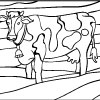
8 Tips for Planning Successful Dog Visits for Seniors
Found In: ›Activities ›Pet Therapy ›Alzheimer's & Dementia ›World Animal Day

Golden Carers has 1000s of activities and resources for senior care.
Pet companionship brings moments of joy and connection to seniors in long-term care. The simple act of stroking a dog's fur can evoke positive responses and brighten the spirits of many a lonely resident.
Organizing dog visits in senior care facilities can have profound benefits for the emotional and mental well-being of residents. Here’s how to plan and execute a successful dog visit program.
Benefits of Dog Visits
- Emotional Uplift: Interacting with dogs releases endorphins, reducing stress and anxiety.
- Social Interaction: Dogs encourage conversations among residents.
- Physical Activity: Activities like playing fetch or short walks help residents stay active.
- Memory Recall: Dogs can trigger pleasant memories in residents with dementia.
- Companionship: Regular dog visits alleviate loneliness and isolation.
Precautions
- Review Resident Profiles: Before the visit, carefully review resident profiles to identify those who have had previous pet experience or a fondness for animals.
- Choose the Right Dog: Select a docile therapy dog known for obeying commands and having a calm demeanor.
- Consult with Clinical Staff: Ensure that there are no allergies or phobias among participants by consulting with the clinical staff.
- Adhere to Protocols: Follow the facility’s protocols for pet visits to ensure a safe and controlled environment for everyone involved.
Materials
- A well-behaved dog (either a family pet or a hired therapy pet)
- Tennis ball
- Dog stick
- Leash and harness
- Water bowl and water
- Treats (if permitted)
Instructions
- Set Up the Area: Arrange seating for residents in a shaded garden area or a comfortable indoor space, ensuring everyone has a clear view of the dog’s activities.
- Introduce the Dog: Allow the therapy dog to interact with residents. Start with one-on-one interactions, letting residents approach and pet the dog at their own pace.
- Encourage Interaction: Position yourself near residents to facilitate interaction with the dog. Guide their hands if needed, and provide gentle reassurance.
- Play Fetch: Introduce simple games like fetch using a tennis ball or dog stick. This can stimulate light physical activity and engagement, bringing smiles and laughter.
- Perform Tricks: If the dog knows tricks, involve residents in giving commands like "sit," "shake," or "roll over." Watching the dog perform is entertaining and satisfying.
- Time Management: Keep the session to 30-40 minutes. Monitor the dog’s behavior and the residents’ engagement levels to determine the appropriate duration.
- Future Visits: At the end of the session, inform residents of the next scheduled visit. This builds anticipation and gives them something to look forward to.
- Supervised Walks: If a resident is able and willing, they can take the dog on a short walk, with your supervision. Ensure the dog is on a leash and under control. This activity can provide additional physical exercise and personal satisfaction.
Enhancing the Experience
- Personal Stories: Encourage residents to share stories about their own pets, fostering a sense of community and shared experiences.
- Photo Sessions: Take photos of residents with the dog (with their consent) to create lasting memories and to share with their families.
- Themed Visits: Plan visits around themes, such as holidays or seasonal changes, to keep the experience fresh and exciting.
Interacting with a friendly dog is sure to lift spirits and create moments of joy and connection for residents who have enjoyed the company of dogs in the past.
These visits not only offer companionship but also promote emotional well-being and a sense of normalcy in their daily routine.
By carefully planning and considering the needs and preferences of the residents, activity directors can create a successful and heartwarming program that benefits everyone involved.
Related Activities
Comments Post a Comment
 29th Dec 2020
Activities Director
29th Dec 2020
Activities Director

 29th Dec 2020
Activity Director
29th Dec 2020
Activity Director
Thank you for this information I’m sure it will be helpful

 5th Sep 2019
Registered Diversional & Recreational Therapist
5th Sep 2019
Registered Diversional & Recreational Therapist
 9th Sep 2019
9th Sep 2019

 21st Apr 2016
Lifestyle Assistant
21st Apr 2016
Lifestyle Assistant
 5th Mar 2015
Lifestyle Co-ordinator
5th Mar 2015
Lifestyle Co-ordinator
 3rd Feb 2015
Diversional Therapist
3rd Feb 2015
Diversional Therapist
i have adopted a 10 yr old Westie who comes to work with me, but i need to develop a policy.

 27th Feb 2014
Recreation and Rehab Manager
27th Feb 2014
Recreation and Rehab Manager
 9th Oct 2013
Diversional therapy team leader
9th Oct 2013
Diversional therapy team leader
 27th Aug 2013
Lifestyle
27th Aug 2013
Lifestyle
 19th Aug 2013
Lifestyle Co/Ordinator
19th Aug 2013
Lifestyle Co/Ordinator
 22nd Jan 2013
Pet Therapist
22nd Jan 2013
Pet Therapist
I have a King Charles Cavalier called Harry he works with me at Scalabrini Village in Griffith. He sits on the residents walkers and they push him around to take him for a walk. He walks beside the wheel chairs and the residents hold the lead while I push the wheel chair. He attends church with the residents he also is involved in the pallitive care which seems to be calming for both resident and family members. He sits on a chair at the table and watches the bingo games. Some even say he brings them luck. Harry has been working at Scalabrini for the last 5 years and now his sister also goes and helps out. Working with Pet Therapy and training the dogs is very rewarding. I have worked with challenging behaviours and the dogs are wonderful. Harry is my dog and I trained him. He was with me through cancer treatment and I relised that he had a gift. He also works with people with disabilities. He is very much loved at Scalabrini and has attended the Aged Care Expo. I travel with Harry 160km one way once a week to Scalabrini. Some may ask.. why? its simple, the smiles and the reactions we get when we walk through the doors from family members staff and residents is wonderful and I am very proud the be part of the Pet Therapy program.

 13th Sep 2012
Recreation Therapist
13th Sep 2012
Recreation Therapist
We (my work place) adopted a stray foxy off the streets,she was 10 months old,filty dirty & having puppies.Our local vet traced the owners who no longer wanted her, terminated the puppies & desexed her, gave her all her shots & put her on his books as a no fee attached dog. That was six years ago & Dolly has won so many hearts and brought meaning and given comfort to so many in that time it is truly remarkable. The place lights up when she enters the building now. For five years she lived day and night at the sixty bed high care nursing home but for the last years she has come to live with me an goes in five days a week for six hour shifts. We also have a french poodle Gigi that visits every second Monday afternoon and we encourage residents family to bring in their pets for visits. Pets just seem to create a buzz of energy throughout the building. I highly recommend Pets as Therapy.
Lynn
 14th Jul 2012
Lifestyle Support Officer
14th Jul 2012
Lifestyle Support Officer
check with your local
RSPCA. I'm a RAO in Canberra and we have 2 beautiful dogs visit once a month courtesy of RSPCA dog therapy. We get a great response from the residents and the dogs enjoy it as well. Christine
 7th May 2012
Activities Co-ordinator
7th May 2012
Activities Co-ordinator
Thanks Mandy Holmshaw
 19th Dec 2009
Diversional Therapist
19th Dec 2009
Diversional Therapist

 Kitten Therapy
Kitten Therapy
 Mosaic coloring activities-Cow
Mosaic coloring activities-Cow
 Farm Animals Bingo
Farm Animals Bingo
 Collective Nouns for World Animal Day
Collective Nouns for World Animal Day


Just want to say what an excellent site we have here, and it gives us more idea every month and thank you to all those involved. I would like to reach out and see if anyone knows of a Dog Therapy that visits age care residents, we are on the Northside of Brisbane, but they have to be reputable company. Kind Regards Louise Dunn
I don’t know of any in your area, but why don’t you call City Hall and ask if they can recommend someone or where are you can look to find somebody in your area